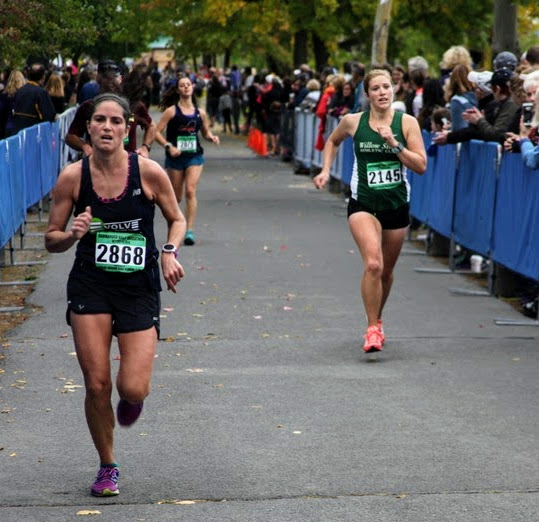#6 Running Watch
SNAPSHOT
How do you like your running watch?
DIGGING DEEPER
I have been very surprised by how often I have been asked or received positive comments about my running watch, the Garmin Forerunner 235. Since I put it on my wrist on January 17, 2016 (3 year anniversary yesterday), it has garnered attention. My previous watch, the Garmin Forerunner 405, was so bulking and really only useful when running that it was strapped on just for logging miles. However, my 235 has rarely gone 12 hours without taking my pulse, counting my steps and miles, and notifying me of text messages.
Was so excited that I actually texted a picture to my husband of my new watch while in my car after exiting the Fleet Feet store in Colonie, NY!
So here is my REVIEW on the Garmin Forerunner 235 after THREE years of real-life testing.
Pros
Fits well on my medium sized woman’s arm and I wear it all the time, day and night (except in water, waterproof to 50 feet deep though).
Love the aqua blue watch band! And easy, low cost to switch out to another color.
Resting Heart Rate Data is so interesting to me that I will get out of a warm bed to walk across a cold room to retrieve my charging watch, in order to gain the data from the early morning before I am awake.
Easy to read the time when running and not running
Texts appear through Bluetooth from my phone, bonus when cooking and I can just glance on my wrist to see if my son is texting me to pick him up from practice. Or when I am running with my phone in my SPIbelt or in my jacket pocket. The vibration signal is a bit Pavlov but it is also very handy.
Highly customizable for screen data fields while running, several data screens available to click through during runs.
Average Heart Rate Data for the entire workout/run is a gauge for my overall fitness, health, and effort.
Lap button recording is so helpful for when I am analyzing data about my own run or my runner’s data.
Data automatically syncs with Garmin Connect App and then onto my Final Surge Training Platform! My runners love this feature!
GPS is fairly accurate on race courses with the exception of trail races.
Garmin Connect App is awesome!!! Free
Good battery life. I plug it in for a couple hours about once a week. If you are a trail runner or ultra runner than you will end up plugging it in a lot more often.
Price has gone way down. Currently $250
Cons
Not as easy to record my nordic skiing as I wish. Have to use the Other activity option and then make edits in Garmin Connect
Auto Pause feature, I didn’t like it at first but I need to try it again. It would be helpful for fixing my problem of forgetting to restart my watch after pausing the timer while I am at a stop light. 235 2.0 could have it run a second tread of data in case I forgot to turn the timer back on so that I could still have the info when I make a mistake.
Can’t read the time of time when I have paused the time during a run. Garmin could make it so that at least one data field could be accessed while still paused.
Garmin Connect Website is average but free to use as a training log and creates reports (favorites = resting heart rate, year to date mileage)
Extras that I don’t personally use but I can see that others would really like
Upload workouts and the watch signals you through the workout.
Tailer the heart rate workout zones
GPS yourself home! The watch actually tells you how to return to where you started for those that get lost! Although when I get lost I get really long runs in, which is totally worth getting lost!
Yep, it can show you the weather!
So how much do I like the Garmin brand?
Well, I gave my 14-year-old runner son a Forerunner 35 for Christmas. I choose the 35 instead of the 235 because of the size and shape of the watch on his arm. The 35 seems a bit smaller. He is very happy and clocking all types of activities! It is such a fantastic way for him to learn more about biology and the body. He often checks his data and better understands his body’s activities and measurements. The Garmin Forerunner 35 is only about $170.
Popular with Runners
Texted photo to my training partner when excited about our average pace together!
Several of the runners I coach have Garmin watches and I can easily follow their training. I look for their average heart rate, pacing per mile or interval, cadence and elevation. It is like I was with them on the run.
SOLUTION
Totally worth the price! Currently my watch cost has averaged out to be 32 cents per day and lowering every day!
This 30-day series is a quest for me as a writer, coach, and runner. I promise to write about running for 30 days in a row. In doing so I intend to gain in knowledge and expression of running and daily life. My hope is that we all grow together.

















